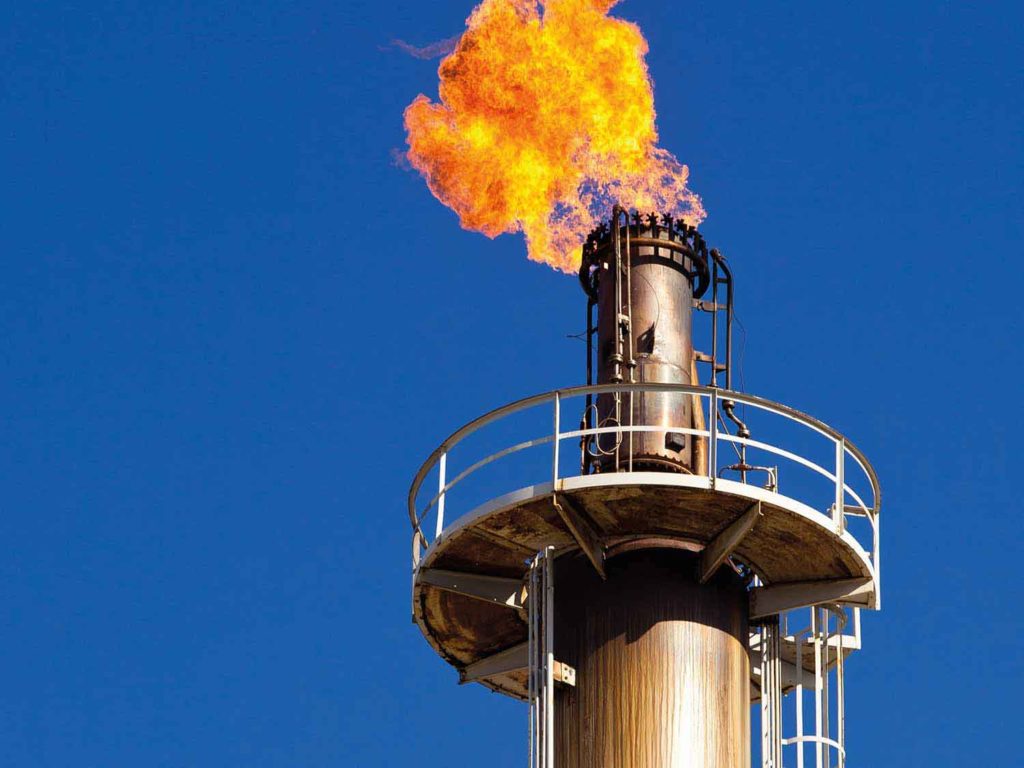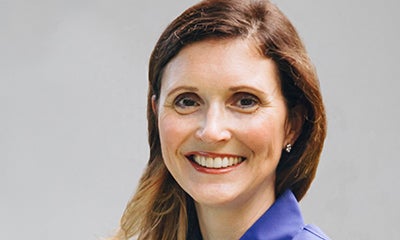Methane is front and center for EIG’s portfolio companies
Note: this is the second installment of a dialogue Q&A series with private equity investors following a methane summit EDF recently hosted for portfolio companies of EIG Global Energy Partners (EIG) and Quantum Energy Partners.

In his comments at EDF’s recent Private Equity Methane Summit, EIG President Randy Wade said, “We as an industry and investors either find a way to address (environmental) concerns in a meaningful fashion, or we face an existential threat,” and that the industry “has seen the train coming for a long time. Companies have the choice to get on the train or get run over by it – the train is here.”
Following the summit, we talked to EIG’s SVP and ESG Director Emily Rodgers.
Andrew: Can you tell us why EIG has recently focused on methane emissions and why you held a summit on the topic with EDF and your portfolio companies?
Emily: Several factors are driving our interest. First, EIG is committed to being a part of the energy transition. But second, there is a lot more interest from our limited partner investors on ESG topics across our upstream portfolio. We are very supportive of constructing our portfolio in alignment with sustainable development scenarios, which requires us to have a good understanding of both climate and broader ESG risks at our portfolio companies and how they can be managed.
Andrew: Did you hear anything at the summit that influenced how you think about managing methane emissions?
Emily: It was interesting to hear how technology can not only reduce methane emissions, but also generate new and rapid revenue. We heard one example of an operator who was eliminating gas-powered pneumatic controllers and immediately recognizing savings of $900,000 a year on top of a 75% reduction in methane emissions. Bringing these types of practical examples to light is helpful – it builds an analytical story with costs and benefits.

Andrew: Do you think there is a misconception among industry players that addressing environmental issues is just an expense with no financial return?
Emily: There was some discussion at the summit about turning environmental initiatives into a profit center – and I believe there is an opportunity to do this. But I think it is hard to make a mental switch. Small and mid-size independents often struggle with how to integrate corporate-driven environmental priorities and compliance into their operations and field staff with intimate understanding of how existing facilities work and where the emissions sources and leaks exist. So, yes, it’s a barrier. But I think we can overcome it.
Andrew: EIG’s president mentioned in his closing remarks that, “There is a pretty strong correlation between our companies that excel in limiting methane emissions and those that are good at operating the rest of their business.” What did you think of that observation?
Emily: I found his comments compelling and we have begun collecting the data to further validate this statement. If you can manage methane, you upgrade your organizational hardware to solve almost any problem and run more efficiently, getting more gas to market and improving returns. It’s only logical that if a company has sound ESG and methane performance, it is likely favorably managing its economics, as well.
Andrew: What are the challenges and opportunities of addressing methane emissions with smaller operators?
Emily: We are in a cost-constrained environment with low commodity prices and companies emerging from bankruptcies. Companies are being asked to spend money to upgrade and replace equipment that might be leaking. That can be challenging, especially if they have let employees go recently. And some don’t have dedicated ESG staff to drive methane mitigation. However, operational creativity does not always require an environmental staff person to drive a methane program. If you have the right operators in the field who are looking for ways to improve efficiency and increase gas to sales, they can make progress and eliminate sources of emissions.

HBS Leadership Fellow, EDF+Business
Andrew: Being in this industry for almost a decade, do you have a success story of a smaller operator tackling methane emissions?
Emily: One company in particular has been employing continuous emission monitoring devices at well sites for several years – quantifying gas measuring systems and selling to the low carbon gas market. And we see other companies on the same path. You can see a difference in how companies manage these numbers and there are successes, leaders, and laggards. EIG wants to bridge the gap between them.
Andrew: What is EIG’s future strategy for methane management?
Emily: We understand that methane management is critical to overall company management and longevity. Going forward, we will be monitoring methane across all of our portfolio companies, collecting information on emissions data and setting goals and assessing what technologies most effectively mitigate emissions. When we conduct due diligence, we will ask about methane emissions. When we close a deal, we will continue to monitor methane emissions and the broader climate impact of a company throughout the life of the investment.
Andrew: What is EIG doing to improve the quality of ESG methane data, something that has historically been difficult to do?
Emily: We are enhancing our due diligence and how we monitor investments once a deal is finished. We have established KPIs and a more robust framework to collect information. In the past, we haven’t been as consistent or analytical as we wanted to be – now we are homing in on the numbers. Methane intensity is tricky because each company calculates it a little bit differently. We are evaluating different opportunities to provide consistency and benchmarks and finding an apples-to-apples metric is important.
Andrew: How important is setting these goal and targets?
Emily: Targets are increasingly important and limited partners are asking us about them. There is a broad range of what a target can be, especially for a company that is just starting this journey. It could be replacing pneumatic controllers in the field. It could be implementing a new facility design, calculating a baseline, and seeing what reductions are with a new technology. It could be a traditional intensity or absolute reduction target. Some companies are more sophisticated and feel comfortable putting discrete numbers with a timeline. But it is important to look down the road and create targets that are tied to compensation and other governance metrics. I recognize that some companies need to gather data before they even get there.
Andrew: Can you tell me a little bit more about low carbon gas markets that some of your portfolio companies are engaged with?
Emily: It is an evolving topic, particularly as more companies and countries commit to net zero 2050 targets. It’s challenging because some operators won’t differentiate natural gas – they may think all natural gas is good. But other companies have taken time and invested resources to implement low-cost continuous emission monitoring technologies. When you have actual, tangible, direct measurements, companies can use the data as a competitive advantage. Organizations need to think about playing a part in the energy transition and looking at methane emissions is a good move.
Connect with Emily on LinkedIn
Follow Andrew on Twitter